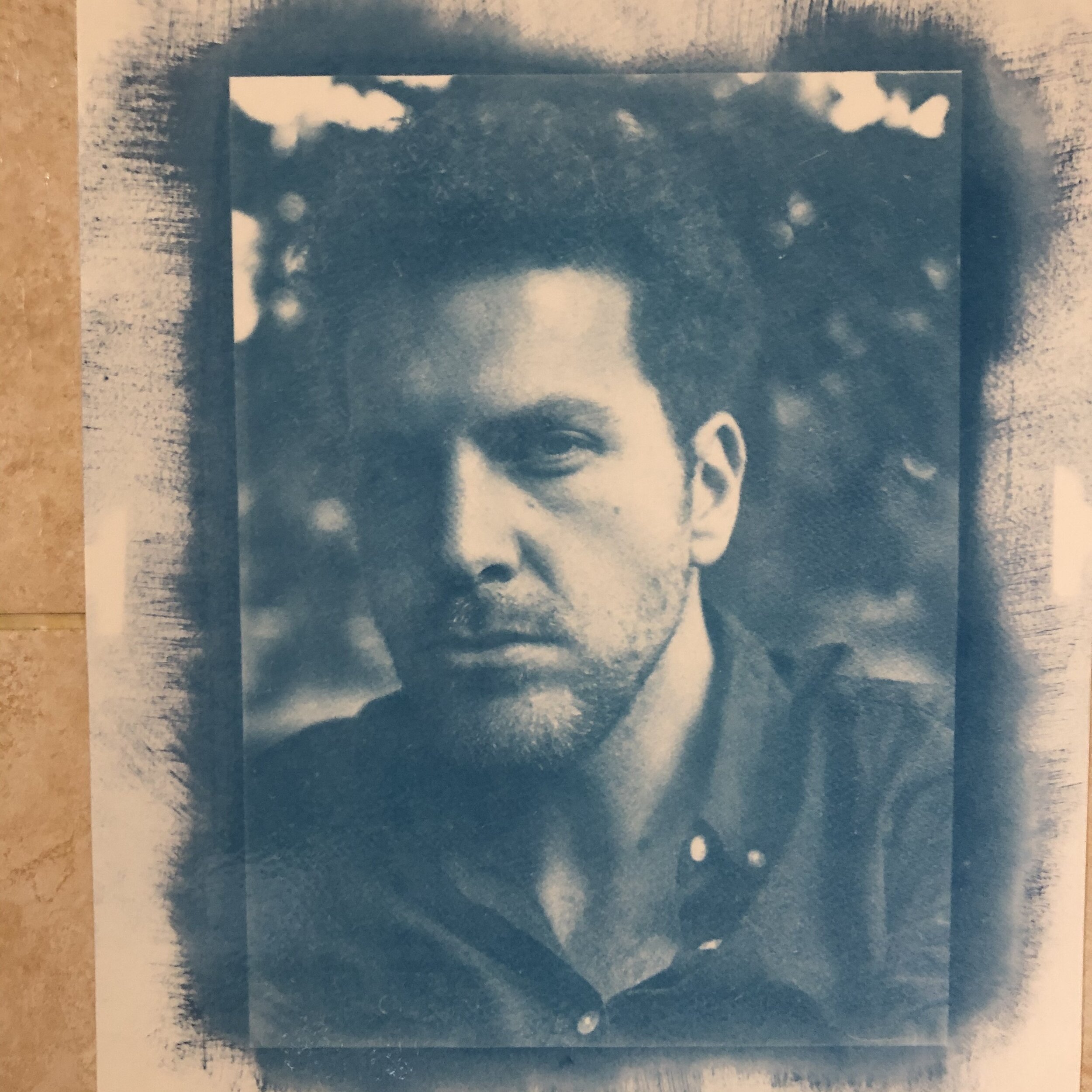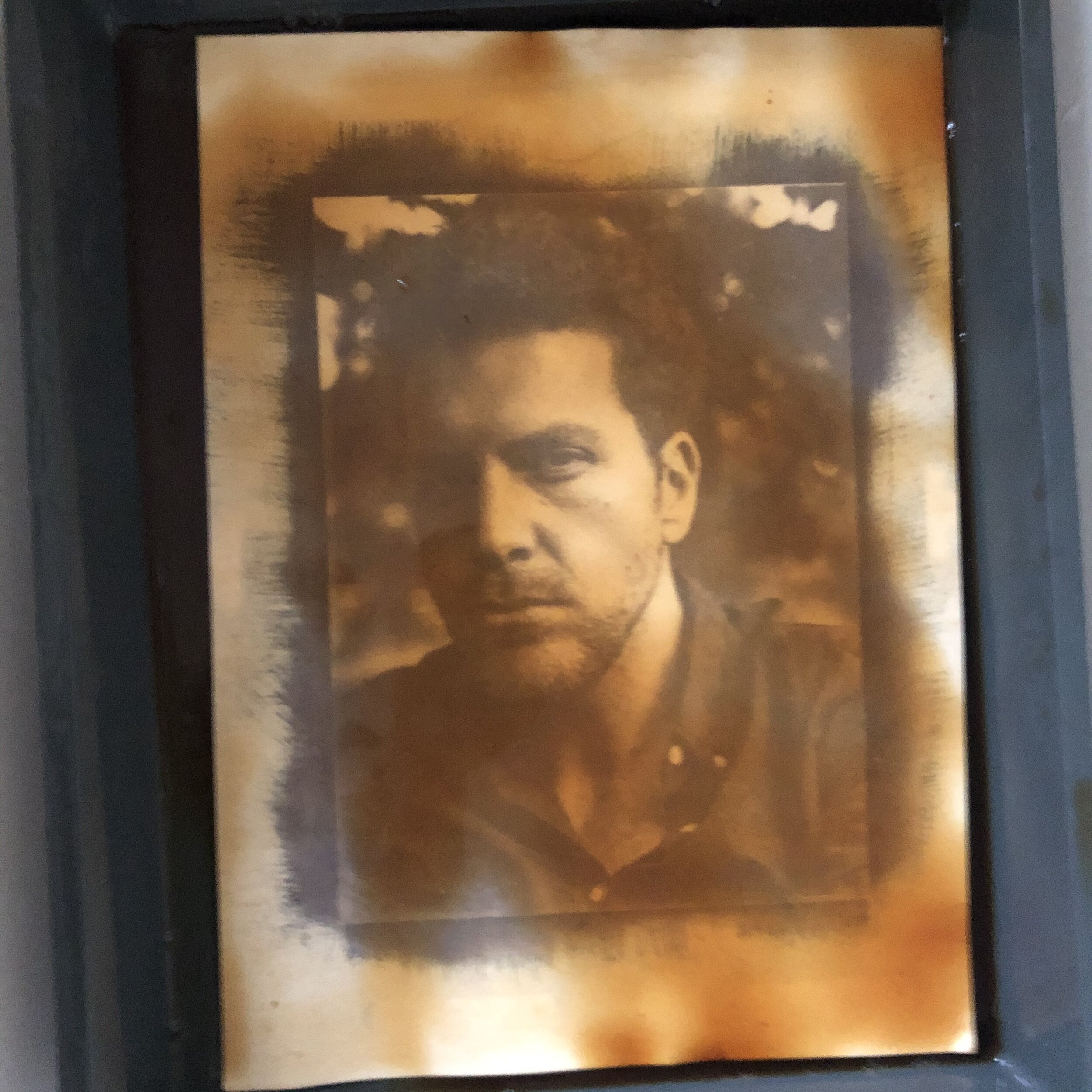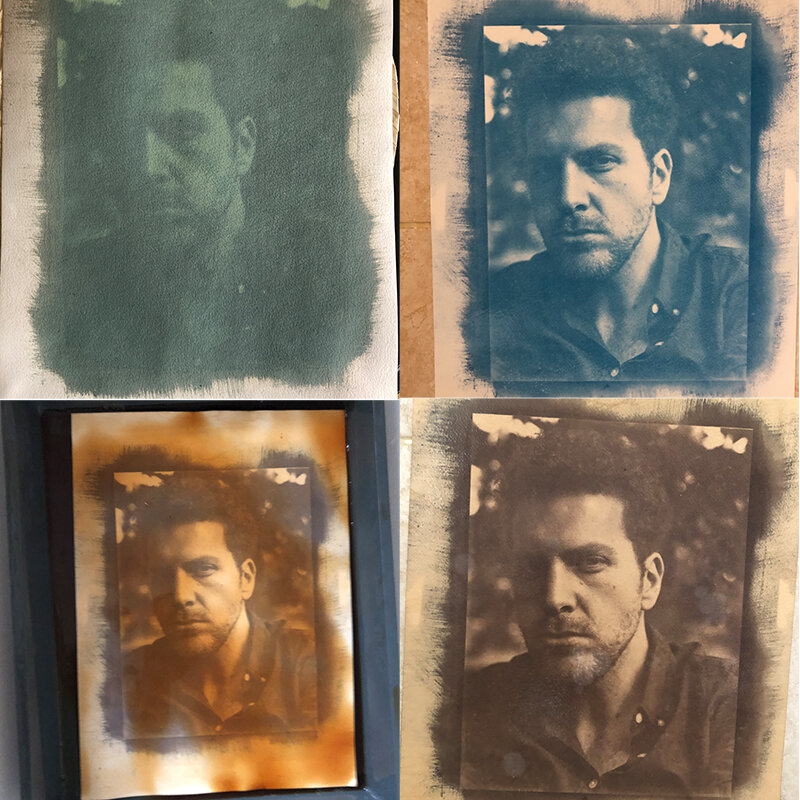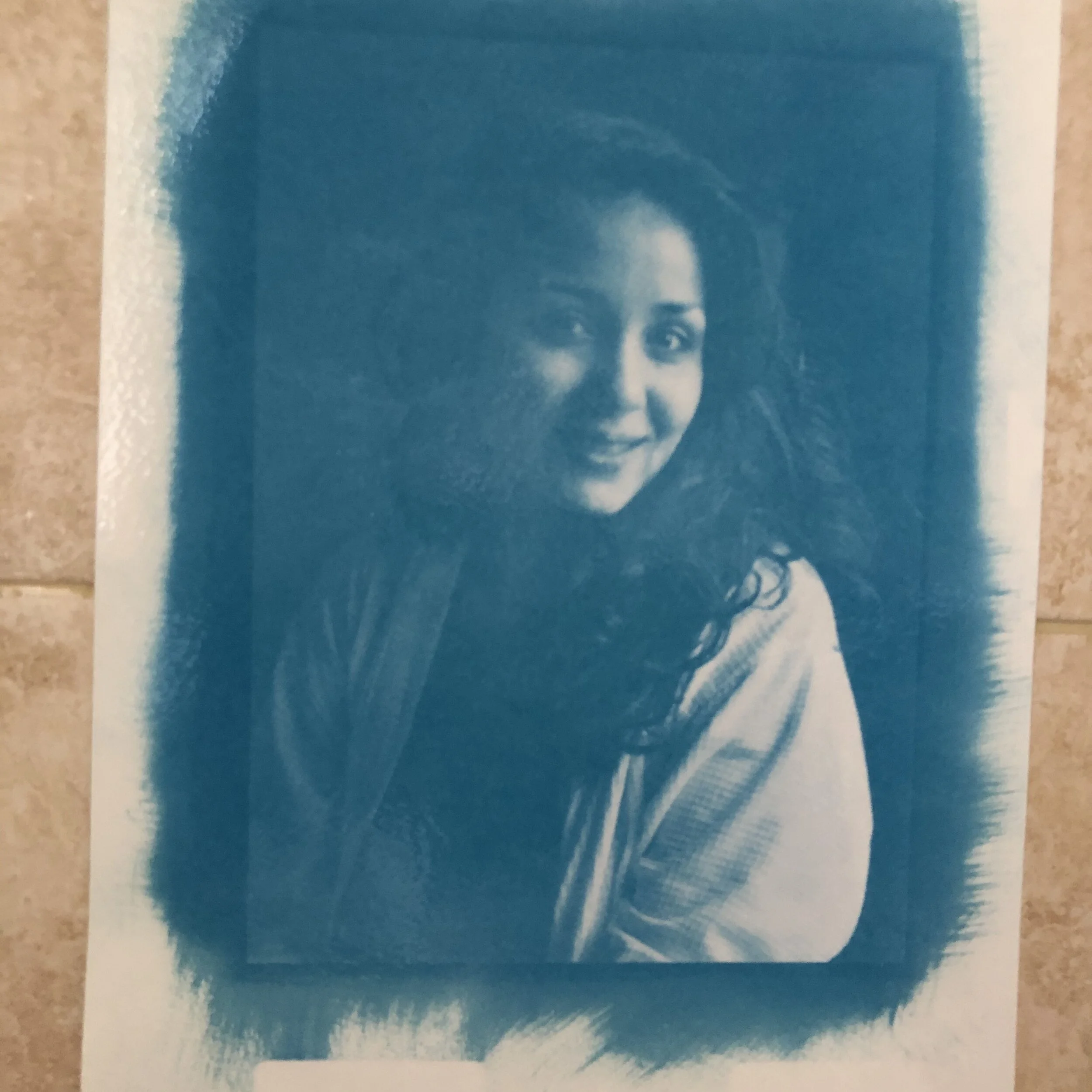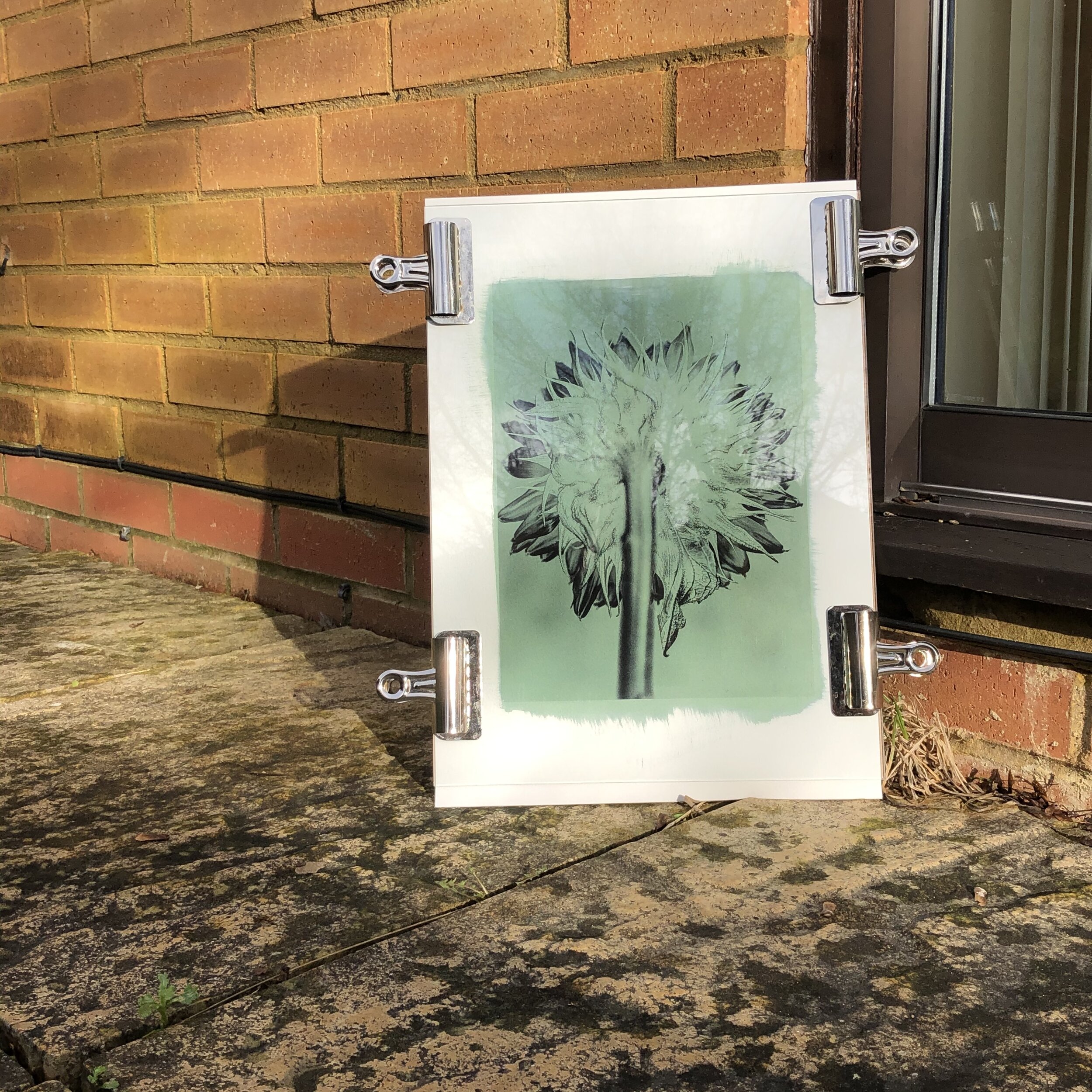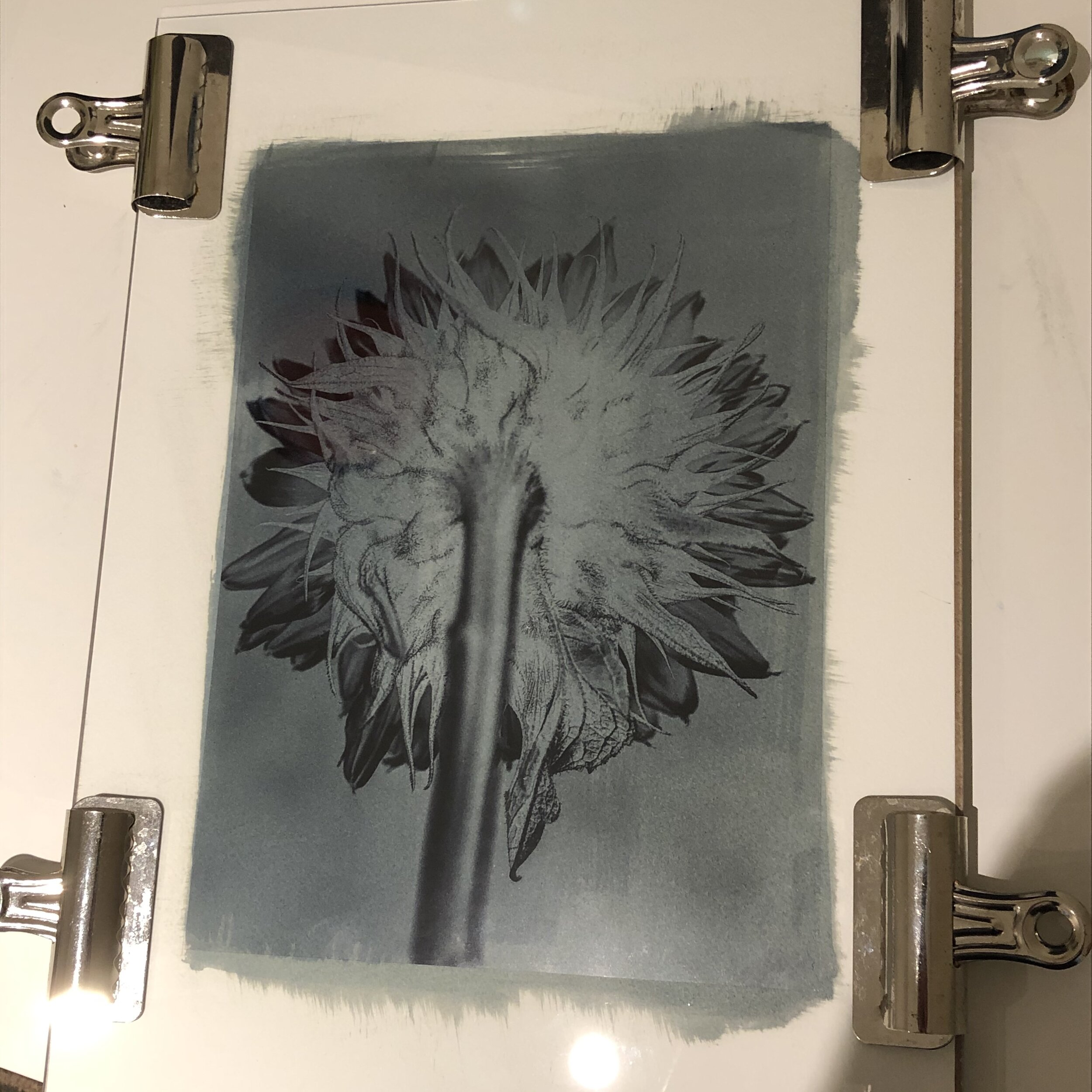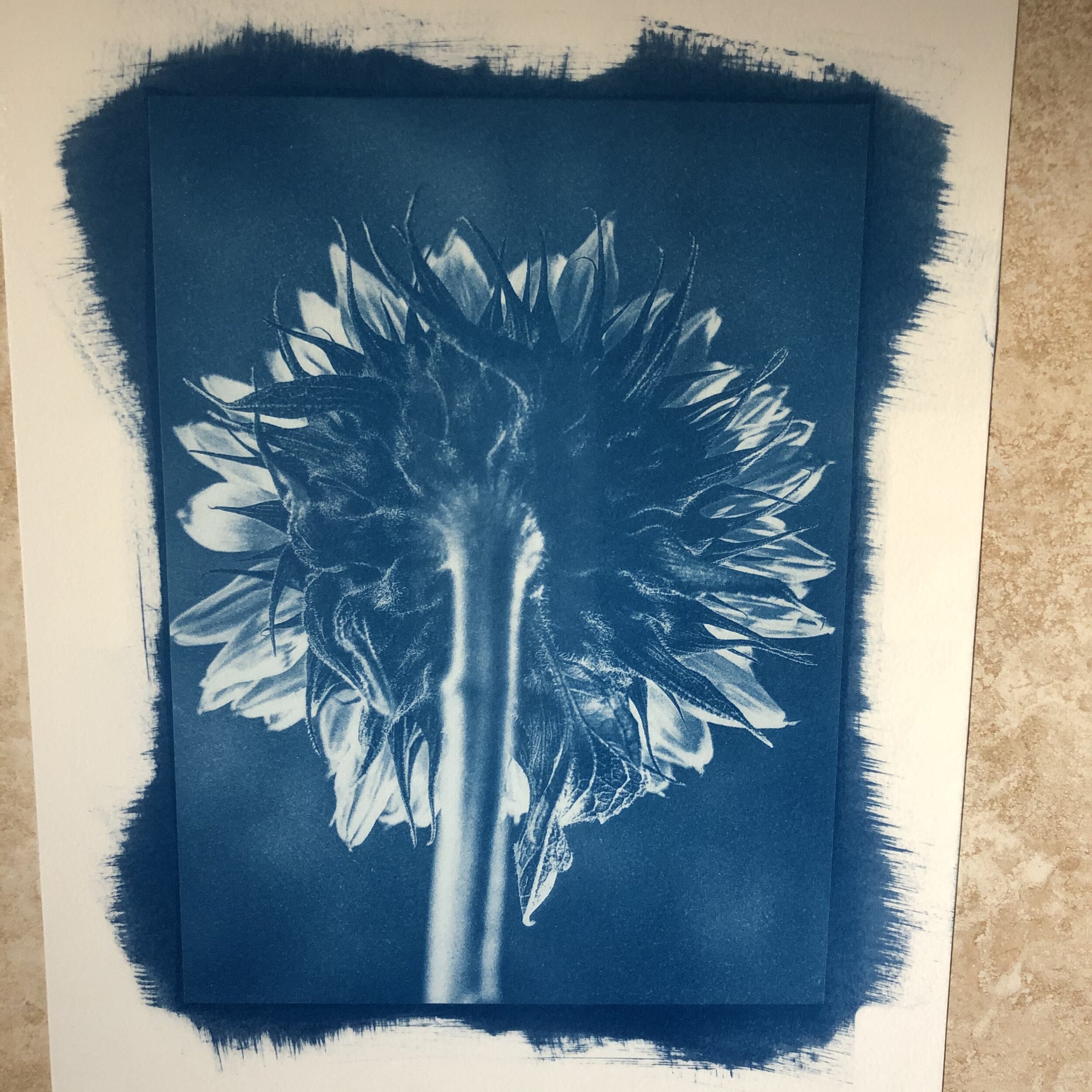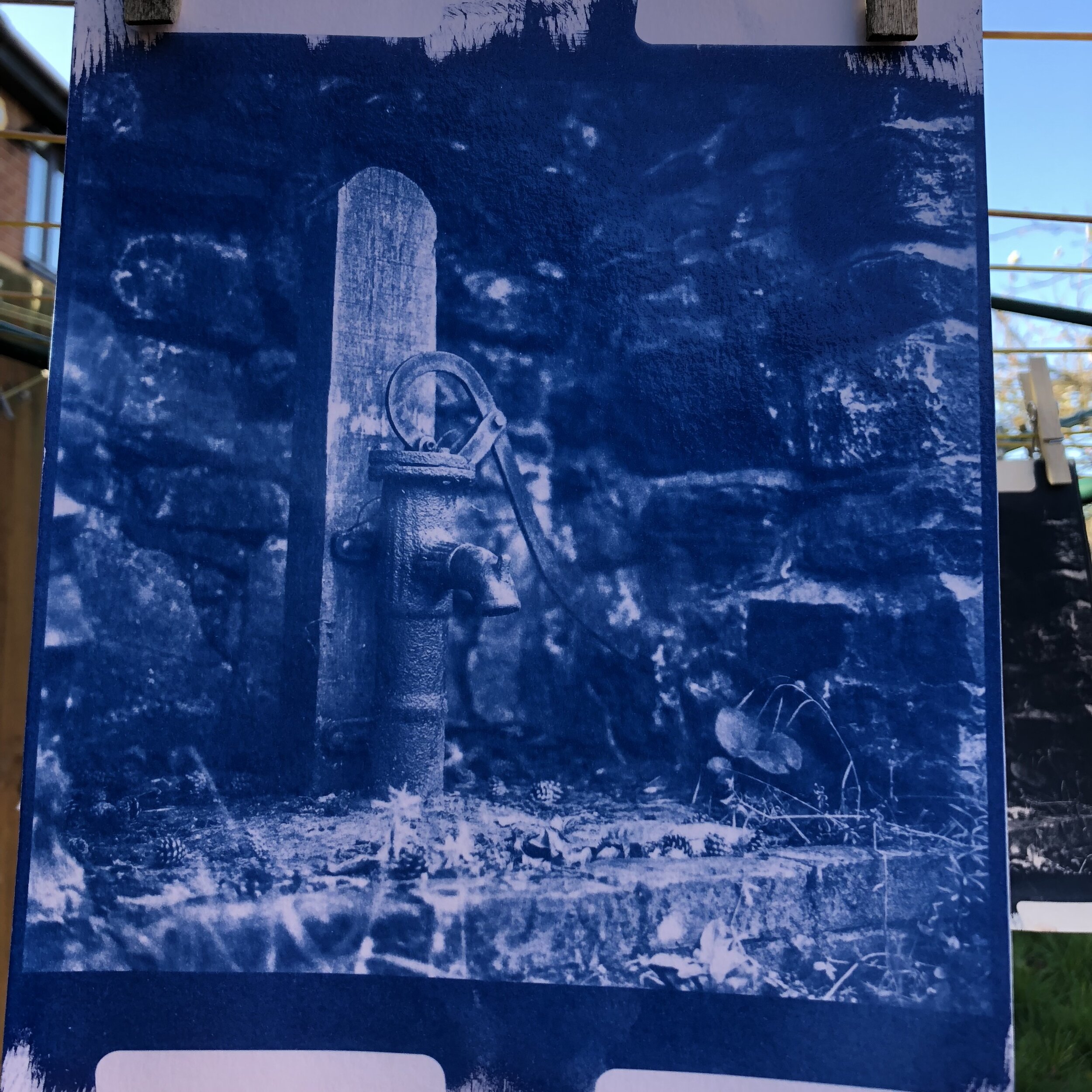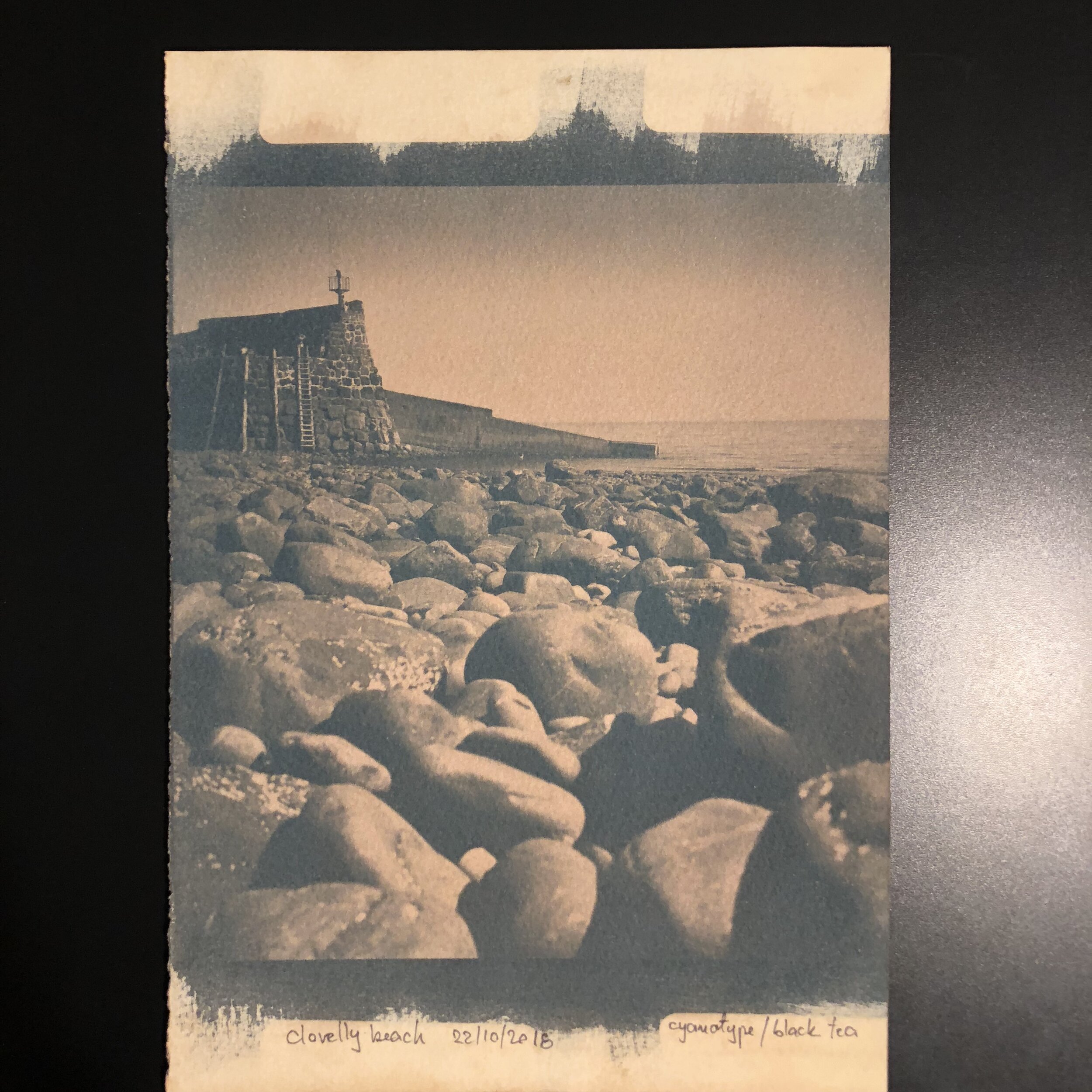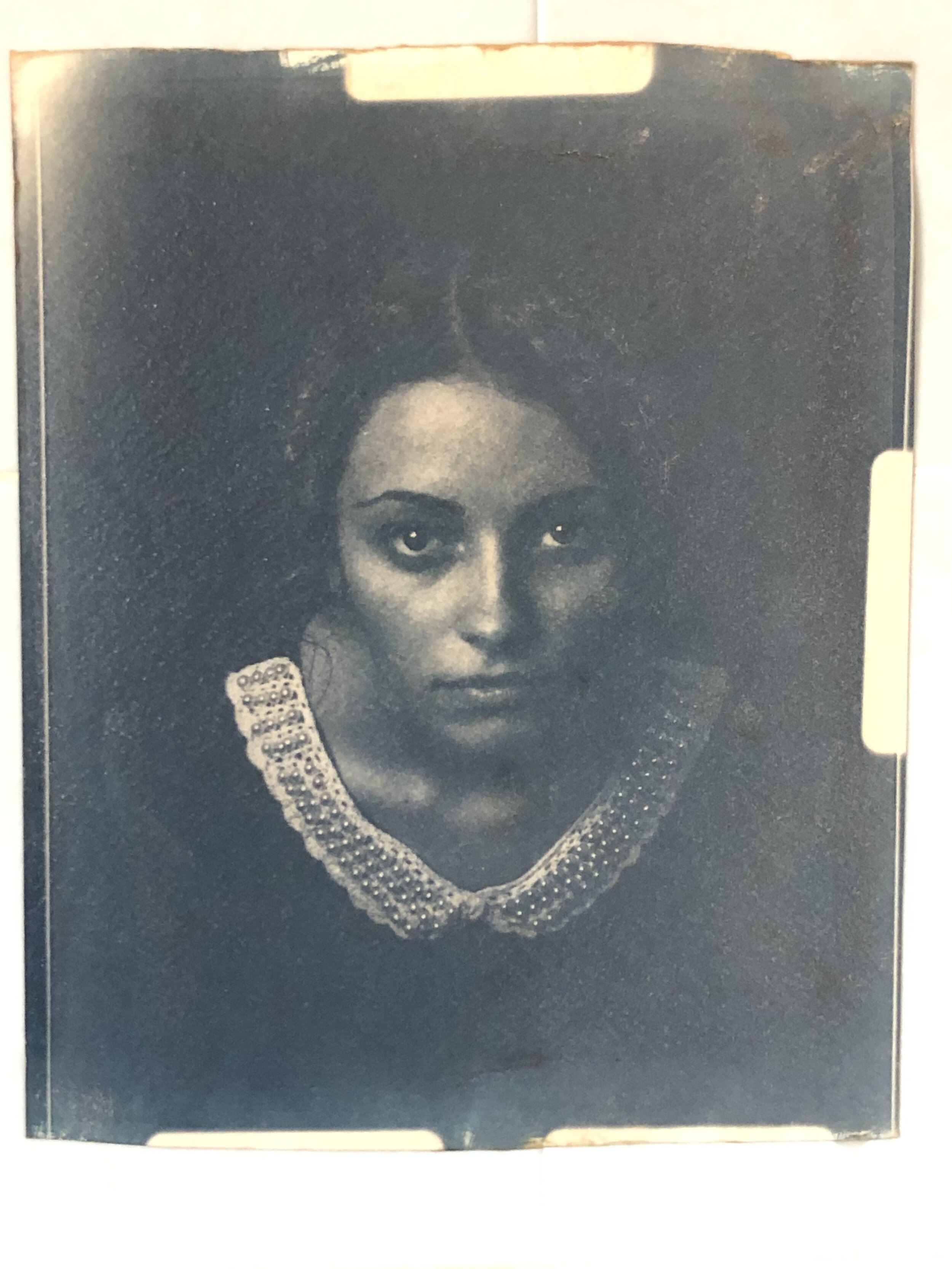Cyanotype is a photographic direct contact printing process that produces a cyan-blue print or a blueprint.
Discovered about 180 years ago (1842) by the English scientist and astronomer Sir John Herschel, the process mainly helped the engineers, well into the 20th century, to create a low-cost copies of drawings.
Numerous contemporary artists employ the cyanotype process in their art.
Long story short, in a typical procedure, two solutions (potassium ferricyanide and ferric ammonium citrate) are mixed to create a photosensitive (UV light) solution which is then applied to a receptive surface (such as paper or cloth) and allowed to dry in a dark place. Using a negative (the size of the print depends on the size of the negative - is a contact print, remember?!) the photosensitive medium is exposed to light (the sun or an alternative UV light source) to produce a positive image (after a complex reaction of the iron). The result is an insoluble, blue dye (ferric ferrocyanide) known as Prussian Blue.
After exposure, developing of the picture involves the yellow unreacted iron solution being rinsed off with running water. Although the blue colour darkens upon drying, the effect can be accelerated by soaking the print in a solution of hydrogen peroxide.
In a cyanotype, a blue is usually the desired colour. However, there are a variety of effects that can be achieved. My preferred one is toning and I always use black tea rather than tannic or pyrogallic acid as is environment friendly and smells nice. :)
Here’s few of my attempts over the last couple of years.
You can help me keep doing this work by clicking the below button to become one of my patrons.
Thanks!

